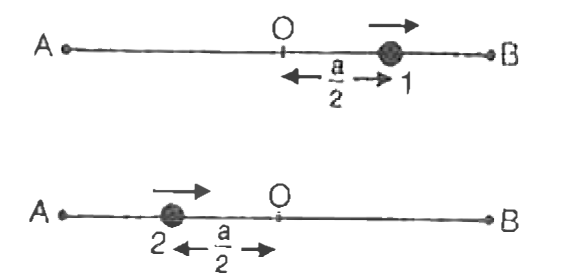Two mutually perpendicular simple harmonic vibrations have same amplitude, frequency and phase. When they superimpose, the resultant form of vibration will be
a circle
an ellipse
a straight line
a parabola
The correct Answer is:C
Step by step video, text & image solution for Two mutually perpendicular simple harmonic vibrations have same amplitude, frequency and phase. When they superimpose, the resultant form of vibration will be by Physics experts to help you in doubts & scoring excellent marks in Class 12 exams.
Updated on:21/07/2023Topper's Solved these Questions
- OSCILLATIONS BOOK - TARGET PUBLICATIONCHAPTER - OSCILLATIONS EXERCISE - EVALUATION TEST
14 Videos
- OSCILLATIONS BOOK - TARGET PUBLICATIONCHAPTER - OSCILLATIONS EXERCISE - Critical thinking
81 Videos
- MODEL QUESTION PAPER BOOK - TARGET PUBLICATIONCHAPTER - MODEL QUESTION PAPER EXERCISE - MODEL QUESTION PAPER -II
47 Videos
- QUESTION PAPER 2019BOOK - TARGET PUBLICATIONCHAPTER - QUESTION PAPER 2019EXERCISE - MCQ
45 Videos
Similar Questions
Knowledge Check
Two mutually perpendicular simple harmonic vibrations have same amplitude, frequency and phase. When they superpose, the resultant form of vibration will be
Aa circleBa straight lineCa parabolaDan elipseWhen two mutually perpendicular simple harmonic motions of same frequency, amplitude and phase are susperimposed
Athe resulting motion is uniform circular motion.Bthe resulting motion is a linear simple harmonic motions along a straight ine inclined equally to the straight lines of motion of component ones.Cthe resulting motion is an elliptical motion, susmmetical about the lines of motion of the compounents.Dthe two S.H.M. will cancel each other.In a simple harmonic mode of vibration, on a string
AOne loop is formedBHalf loop is formedCTwo loops are formedDThree loops are formed
Two simple harmonic motions with the same frequency act on a particle at right angles i.e., along X-axis and Y-axis. If the two amplitudes are equal and the phase difference is π/2, the resultant motion will be
View SolutionTwo particles execute simple harmonic motion of the same amplitude and frequency along close parallel lines. They pass each other moving in opposite directions each time their displacement is half their amplitude. Their phase difference is
View SolutionWhen two simple harmonic motions of same periods, same amplitude, having phase difference of 3π/2, and at right angles to each other are super imposed, the resultant wave from is a
View SolutionTwo simple harmonic motion of angular frequency 100and1000rads−1 have the same displacement amplitude The ratio of their maximum acceleration is
View SolutionThe resultant of two rectangular simple harmonic motion of the same frequency and unequal amplitude but differing in phase by π/2 is
View Solution

